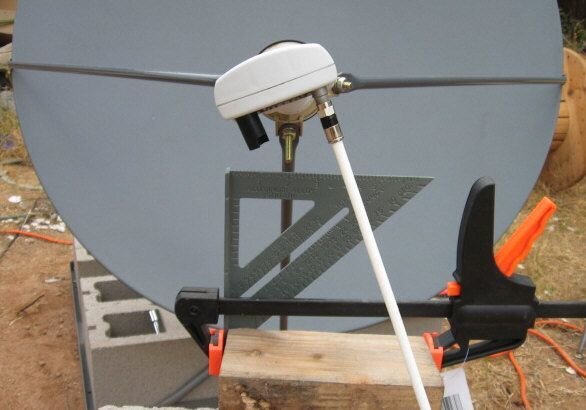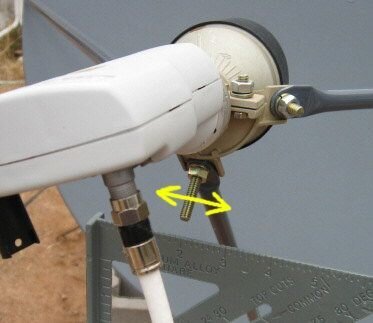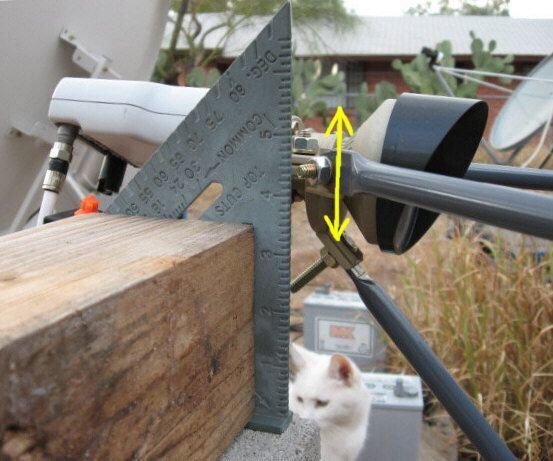On the motorized Fortec 90cm dish 11735H 4440 comes in at 61-63. No soap. 11774 comes in at 91-94. Kind of unstable. But that dish setup works OK for most sats, so I didn't want to mess with it...
I get RTN on a stationary ADTH 87CM dish. It was a real pain to set up. 11735H barely comes in at 66. 11774 comes in at 94. Both of these TPs are fairly steady after a lot of adjustment. Receiver: Coolsat 5000.
What I did was to find a way to repeatably measure dish adjustment for azimuth and elevation. After finding the satellite, I moved the dish back and forth in fixed increments. This was done while writing down the signal strength value from the receiver.
For example. I moved the azimuth west in 1/8 inch increments measured at the feed horn until the squality dropped off. After each move, I recorded the quality. Then I moved the azimuth back east. The signal locked again. After a number of increments, the quality dropped off again.
Then I temporarily set the azimuth half way between the positions where the signal would lock.
Then I repeated the procedure for elevation.
Then I repeated the procedure for skew. I started with marking a point on the LNB from a reference point on the LNB holder. This was done much as before. I rotated skew until the quality died. Another mark corresponding to the reference point was written on the LNB. Then the skew was rotated the opposite direction until the quality died again. Another mark was written on the LNB. The skew was set half way between the mark limits.
After that, I repeated the azimuth, elevation and skew adjustment method again. Once I found the best quality, I tried again, moving in 1/16" increments around the sweet spot. This was done until I could do no better.
An example of initial measurements on a one meter Prodelin pointed at G18 follow:
Code:
Azimuth
1 3/8
1 1/2 - 9-10
1 5/8 - 61-60-63
1 3/4 - 62-63
1 7/8 - 63-62
2 - 62-63
2 1/8 - 63-62
2 1/4 - 62-61-63
2 3/8 - 61-10
2 1/2 - 9-10
2 5/8
Elevation
3 1/8
3 1/4 - 8
3 3/8 - 60-09
3 1/2 - 60-63
3 5/8 - 63-62
3 3/4 - 63-64-62
3 7/8 - 63-64-62
4 - 61-63-60
4 1/8 - 9-10-60
4 1/4 - 8-6
4 3/8
Some pictures of doing this on a one meter Prodelin are attached.
Hope this helps.
After having said all that, the picture on RTN pixellates once in a while but it is watchable.
PS: For a BUD, I would try to verify that your feedhorn is at the focus. I have some ideas. But, having only set up one 1.8 meter dish, I'll let someone else suggest how to do that...






 :
: